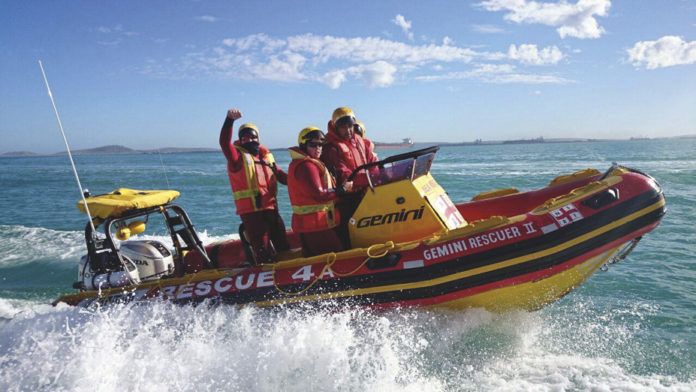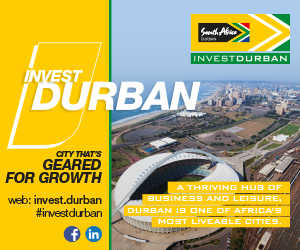Boats built in Cape Town are collecting astronauts in the waters of the Gulf of Mexico after they splash down. Epping-based Gemini Marine has signed a deal with Elon Musk’s SpaceX to supply recovery boats for astronauts returning from the International Space Station. A selection of international clients includes the UK Ministry of Defence, the Royal New Zealand Navy, the United Nations and the Singapore Special Forces.
Marine industry insight
The South African Boat Builders Export Council (SABBEX) reports that the sector is particularly strong in catamarans and yachts, but a growing variety of boats are being built. These includes custom and semi-custom built monohulls, powerboats, commercial vessels, sport-fishing boats and inflatables.
Two Oceans Marine manufactures both power and sailing catamarans in 4 500 m² of factory space on two different premises, in Cape Town harbour and in Paarden Island. The company runs an internship programme with False Bay TVET College.
Damen Shipyards Cape Town is building three inshore patrol vessels for the South African Navy, the first of which will be delivered in 2021. The vessels will be used to secure South Africa’s waters against threats such as illegal fishing, smuggling and piracy.
Since 2014, investments worth R30-billion have been made into the sector and created more than 7 000 direct jobs (Invest Cape Town). The Western Cape Department of Economic Development and Tourism (DEDAT) reports that in 2016 the oil, gas and marine sector supported 8 320 jobs and contributed R1-billion to the province’s gross value add.
The Western Cape has enthusiastically embraced the national strategy called Operation Phakisa (“hurry up” in Sesotho). The 2033 target is for the share of the Maritime Economy to South Africa’s gross domestic product (GDP) to grow by 250% (and perhaps as much as 350%) compared to its current value, to a figure between R129-billion and R177-billion. A million new jobs are expected to be created.
The construction of an offshore supply base in the Port of Saldanha on a dedicated quay is an excellent example of the impact of Operation Phakisa. Saldehco, a privately-owned South African special purpose vehicle with foreign investors, submitted a tender in 2016 through the Transnet National Ports Authority (TNPA) to build this infrastructure to support the growing oil and gas industry.
Large industrial operations already exist at Saldanha and the Port of Saldanha Bay is the portal for the export of South Africa’s iron ore. The Saldanha Bay Industrial Development Zone (SBIDZ) is becoming a hub for a range of maritime repair activities and oil rig maintenance and repair.
The National Department of Trade, Industry and Competition (dtic) and the DEDAT have collectively invested R500-million in core infrastructure and a lease agreement has been signed with TNPA. The SBIDZ fits neatly into two overarching visions: Operation Phakisa and Project Khulisa, the targeted growth strategy of the Western Cape Provincial Government which includes servicing and repairing of oil rigs as a priority.
The marine transport committee of the South African Oil and Gas Alliance (SAOGA) is preparing South Africa to reap the potential of the sector. It has developed 18 initiatives across three categories: infrastructure and operations, skills and market growth.
During the Covid-19 lockdown, the Port of Cape Town did not shut down for a single day. Working teams were reduced and reallocated but the vital work of loading and unloading supplies was done. A task force with a wide range of representatives from government, business and port authorities is working on reducing congestion at the harbour.
A renewed focus on ship repair through facilities such as the Sturrock and Robinson drydocks is on the cards for the Port of Cape Town, which has a diverse offering through its Container Terminal, Multipurpose Terminal, Liquid Bulk Terminal and Fresh Produce Terminal.

The Western Cape fishing industry
About 310-million kilograms of fish is consumed annually by South Africans, of which about half is caught locally. The main fish are hake and sardines and almost all of that is harvested in Western Cape waters by deep-sea trawlers.
 The fishing industry earns R3.4-billion in foreign earnings annually and employs 26 500 people across 22 sectors, the main ones being deep-sea trawling and aquaculture (JSE). The aquaculture industry is currently small, but since 2014 investment commitments of about R700-million have been made.
The fishing industry earns R3.4-billion in foreign earnings annually and employs 26 500 people across 22 sectors, the main ones being deep-sea trawling and aquaculture (JSE). The aquaculture industry is currently small, but since 2014 investment commitments of about R700-million have been made.
The allocation of commercial fishing rights in 12 sectors that was due to happen in 2020 has been postponed to December 2021. It is likely that the quotas of larger fishing companies will be reduced in favour of small-scale fishing companies.
There have been several changes in ownership in the fishing industry, most likely linked to the upcoming determination of new fishing rights in which black shareholding will be a factor. The acquisition by black-controlled Sea Harvest Group of Viking Fishing is part of a larger trend.
Tiger Brands has unbundled its 42% stake in Oceana Group. Oceana holds the popular pilchards brand Lucky Star, which enjoys 80% of market share in South Africa, and has the highest market value of fishing companies in South Africa. The Oceana Group recently purchased Foodcorp’s fishing rights and a US fishmeal and oil company, Daybrook.






